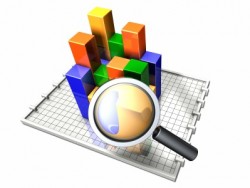How Reporting And Analytics Differ and Why They Are Both Important: Part 1
 This is part one of a two-part series.
This is part one of a two-part series.
Even though we often hear the terms “reporting” and “analytics” used interchangeably, this is actually a misconception. Although they both use the same data, they each have completely different purposes. Both reporting and analytics are vital because they better equip the organization to make key decisions that increase its value.
While reporting and analytics can help an organization do that, by not understanding the difference between the two, it could prevent the organization from using both concepts to their full potential. Here’s an overview on how they differ:
Basic Definitions: Reporting Vs. Analytics
Before we dig any deeper, here are the basic definitions of the two and how they relate to business intelligence. Once data is collected, it will be organized using tools such as graphs and tables. The process of organizing this data is called reporting. Analytics, on the other hand, is the process of taking the organized data and analyzing it in order to gain valuable insights on how businesses can improve their performance.
The problem with raw data is that it isn’t intelligible. It needs to be organized after it’s collected so that it is easier to visualize. In other words, it is much easier for analysts to use the information when viewing it from within the reports. It is during this process that a transformation takes place. It is no longer simply data – through reporting it becomes usable information. Not all reports are created equal, but when reporting is done well, it should help enterprises monitor all aspects of their business operations.
Turning Information Into Insights
While reporting turns data into information, analytics helps enterprises turn the information into insights. The goal of analytics, then, is to take the information and actually interpret it. Analysts start by asking questions that may arise when looking at the data that has been organized in the reports. Once the analysis is complete, a good analyst will also be able to provide recommendations as to a course of action that will ultimately improve business performance.
Therefore, the end goal is to use the process of analytics in order to not only uncover the problems themselves, but also the solutions. Analytics uses the information provided in the reports to derive insights as to why something within the organization is happening as well as what can be done to fix it.
When it comes to reporting and analytics, you can’t have one without the other. The whole process begins with the raw data itself. From there, the data needs to be organized in a way that presents it as actual information. Reports can be detailed and use a variety of tools but the end goal is the same – to make it easier for those performing the analysis to be able to see what is actually going on within the organization. This means that the integrity of the reports makes all the difference in the analytics phase, which is focused on not only uncovering any problems within the organization, but also the solutions.